Manufacturing. Rosatom’s Fuel Division launched a lithium-ion energy storage gigafactory, the first in Russia. The facility is capable of producing 4 gigawatt-hours (GWh) of battery capacity per year, which is equivalent to approximately 50,000 traction batteries for electric vehicles. The factory features a full production cycle, ranging from mixing primary chemicals for battery cells to assembling complete battery packs. With over 3,000 units of equipment installed, the production lines stretch for 2.5 kilometers. About 90% of all processes are automated, enabling a production speed of one cell per second. Construction of a second gigafactory in New Moscow began in September 2023; it will also have an annual capacity of 4 GWh. Its commissioning is scheduled for 2026. By 2030, the Russian energy storage market is projected to grow to 20–30 GWh. Lithium-ion batteries are widely used in the electric mobility and power industries: direct current systems provide uninterruptible power to industrial facilities, while energy storage systems smooth out load profiles and help save on electricity costs.


Medicine. Saint Petersburg hosted the 4th Nuclear Medicine 2025 Congress. Organized with Rosatom’s support, the event brought together over 500 professionals from Russia and other countries. Delegates emphasized the importance of cooperation between research centers, medical organizations, and manufacturers in developing every aspect of nuclear medicine. According to experts, 62 radiopharmaceuticals are registered in Russia, with only four being foreign-made. They serve primarily for diagnostics, but the number of therapeutic drugs for treating severe diseases is growing. About 220 Russian medical centers use radionuclides in the diagnostics and treatment of oncological and non-oncological diseases. “Activities of Rosatom’s Research Division are not limited to reactor-based isotope production. We cover the entire supply chain, from fundamental science to commercial sales,” says Alexander Tuzov, First Deputy CEO of Rosatom Science.
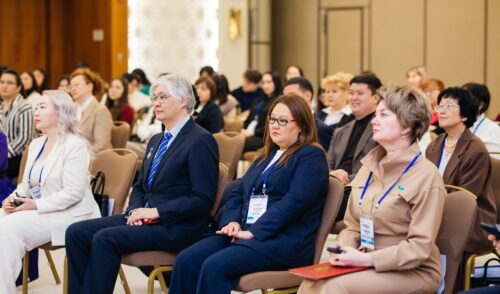
Collaboration. Rosatom participated in the Women in Industry and Technology Congress held in Astana. Delegates included female employees and top managers from industrial companies of Kazakhstan, Russia, Türkiye, Egypt, and Serbia. At the plenary session, women’s communities from Russia and Kazakhstan proposed creating a consolidated action plan for the 20 member countries of the International Council of Women in Industry and Technology. Opening the congress, Timur Zhantikin, Deputy Chairman of the Kazakhstan Atomic Energy Agency, noted that this year is important for Kazakhstan as the country has commenced construction of the Balkhash Nuclear Power Plant jointly with Rosatom. “This project is a development driver for local companies. About 30% of the work will be carried out by Kazakh businesses and professionals. All paths are open here for our respected women, whose professionalism and competencies are becoming a driving force of progress,” he said.
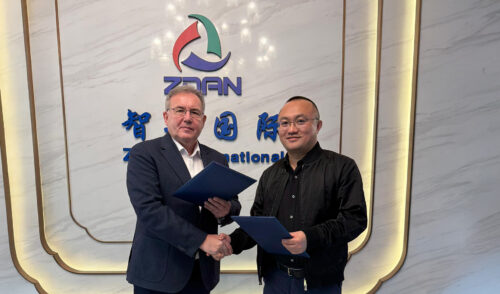
Science. Chinese company Shanghai ZDAN International Co has joined a consortium that will operate an advanced fast-neutron research reactor (abbreviated MBIR in Russian) and acquired General Member status. MBIR is a sodium-cooled fast neutron research reactor currently under construction at the site of one of Rosatom’s R&D centers in Dimitrovgrad. Once completed, MBIR will be one of the most powerful facilities in its class, enabling a wide range of research in materials science, nuclear medicine, reactor technologies, and other advanced fields. MBIR-related research activities will be managed by an International Research Center (IRC) consortium. Its members will receive priority access to experiments necessary for their national civil nuclear energy programs. “By joining the MBIR Consortium, our company intends to open up new opportunities for a broader application of nuclear technologies in energy, industry, medicine, and other sectors,” says Shi Xiling, Director General of Shanghai ZDAN International Co. The MBIR Consortium remains open for new members.
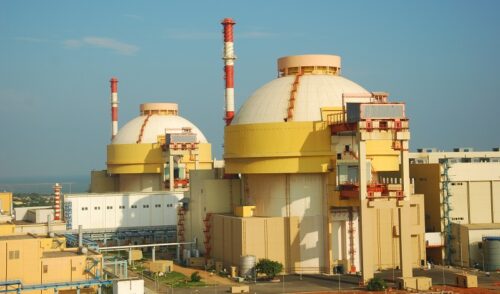
Shipments. Rosatom’s Fuel Division has made the first shipment of nuclear fuel for the initial loading of the VVER-1000 reactor at Unit 3 of India’s Kudankulam Nuclear Power Plant. Seven shipments from Russia to India are planned to supply the entire reactor core and establish a fuel reserve. During the operation of the first two units at Kudankulam, Russian and Indian engineers managed to increase their efficiency by introducing advanced nuclear fuel and extending refueling intervals. Kudankulam Units 3 and 4 will be the first-ever VVER-1000 units to operate with 18-month refueling intervals from the start. The Kudankulam NPP will have six power units with VVER-1000 reactors and a total installed capacity of 6,000 MW. Units 1 and 2 were commissioned in 2013 and 2017, respectively, while Units 3 and 4 are currently under construction. Rosatom is the general designer and technology vendor for the project.
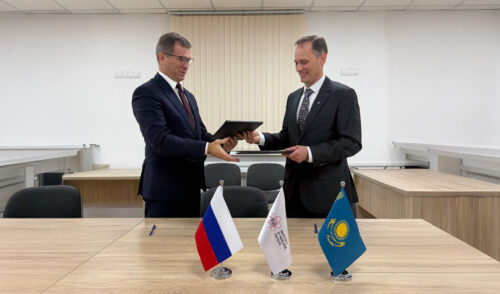
Collaboration. Rosatom Construction Technologies (RCT) and the Institute of Nuclear Physics of Kazakhstan have signed a memorandum of understanding. The document formalizes the parties’ intention to work on a project to build a multipurpose research reactor and laboratory facilities in Kazakhstan, and also provides for the expansion of cooperation in peaceful uses of nuclear energy. “The Head of State issued a clear instruction to strengthen the scientific foundation of the nuclear industry by modernizing the existing facilities and building new ones. The construction of a research reactor at the Institute of Nuclear Physics and a similar facility at the National Nuclear Center is a key step toward developing advanced technologies, training personnel, and expanding our research and development capabilities,” noted Almasadam Satkaliyev, Chairman of the Republic of Kazakhstan’s Atomic Energy Agency. RCT has solid experience in the design and construction of nuclear science and technology centers. “Building a research reactor and establishing a nuclear science and technology center solves a number of important tasks, such as training professionals for the nuclear industry and laying a strong foundation for research and development activities in the country,” said RCT CEO Ilya Vergizaev.
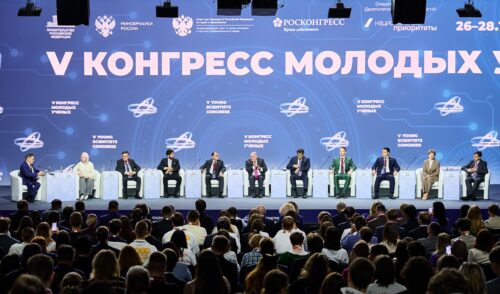
Science. Rosatom actively participated in the 5th Young Scientists Congress held recently in Russia. Speaking at one of the sessions, Rosatom Director General Alexey Likhachev outlined his vision for the principles of nuclear energy development: “First, there are no alternatives in the coming decades to using nuclear technologies for the benefit of the world. Second, all countries and peoples should have non-discriminatory access to these technologies. And third, we should shun ‘technological colonialism’ or forcing the work patterns and approaches that currently exist in international cooperation,” Likhachev noted. Rosatom’s booth featured around 30 events, including lectures by leading Russian scientists, academic quizzes, and other activities. With over 550 events on the program, the 5th Young Scientists Congress was the largest in history. The congress was attended by more than 8,000 delegates from 100 countries.

Wind power. Electricity from the first phase of Rosatom’s Novolakskaya wind power project in Dagestan has been fed into the Russian national power grid. The first phase comprises 61 wind turbines with a total installed capacity of 152.5 MW. The second phase to be commissioned in 2026 will have a total capacity of 147.5 MW and feature an additional 59 wind turbines. Once the second phase is online, this wind power project will be the largest in Russia with a total installed capacity of 300 MW. By 2028, Rosatom plans to operate more than 2 gigawatts of wind capacity, including new builds and stations already brought online. The corporation operates across the entire supply chain for wind power projects, from engineering to maintenance. Local content in Rosatom’s wind farms stands at 85%. Rosatom is also building a 100 MW wind farm in the Kyrgyz Republic.

Collaboration. Rosatom subsidiaries and the Vietnam Academy of Science and Technology have signed an agreement of intent on environmental protection. The document provides for the development of long-term cooperation in environmental safety, as well as in hazardous and legacy waste management. Specifically, the Russian party presented its experience in setting up a centralized system for managing Hazard Class I and II waste in Russia, and a cooperation plan to implement a four-component strategy for managing the remediation of legacy sites. During the meeting, the parties also discussed the preparation and approval of a joint Priority Action Plan aimed at introducing a legacy site management strategy in Vietnam. This document will serve as a framework to operationalize future agreements.

